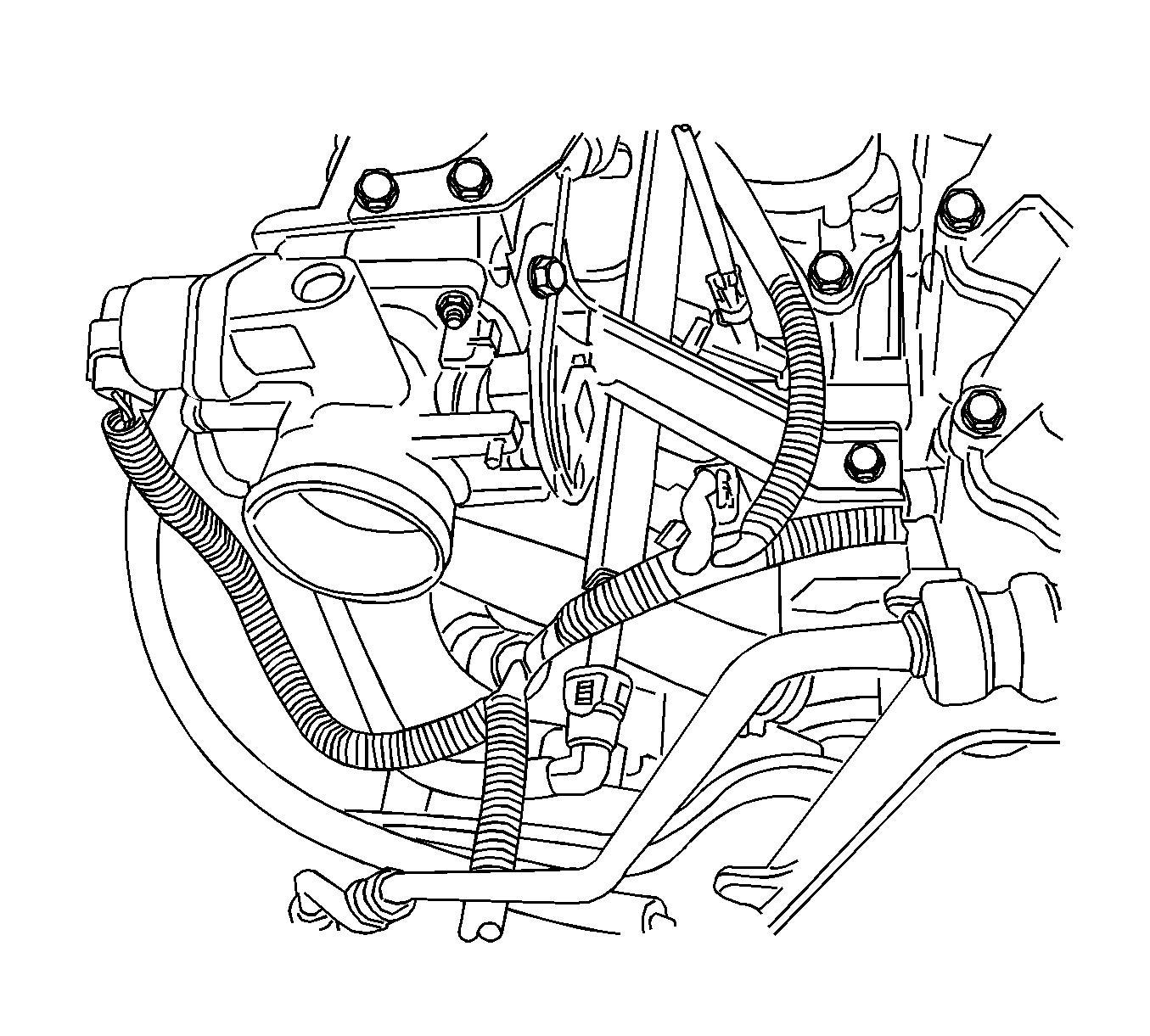Tools Required
| • | KM-470-B Angular Torque Gage |
| • | J 45059 Angle Meter |
Removal Procedure
- Remove the fuel pump fuse.
- Start the engine. After it stalls, crank the engine for 2 seconds.
- Remove the hood. Refer to Hood Replacement .
- Drain the engine oil.
- Disconnect the negative battery cable.
- Disconnect and separate the battery positive cable.
- Disconnect the negative battery cable from the vehicle frame.
- Discharge the air conditioning (A/C) system, if equipped. Refer to Refrigerant Recovery and Recharging .
- Disconnect the intake air temperature (IAT) sensor connector.
- Remove the air intake tube from the throttle body and the air filter housing.
- Disconnect the breather tube from the valve cover.
- Remove the right front wheel. Refer to Tire and Wheel Removal and Installation .
- Remove the right front wheel well splash shield.
- Remove the serpentine accessory drive belt.
- Drain the engine coolant. Refer to Cooling System Draining and Filling .
- Remove the cooling system radiator and the engine cooling fans. Refer to Radiator Replacement .
- Disconnect the upper radiator hose from the thermostat housing.
- Disconnect the coolant surge tank hose from the radiator.
- Disconnect the power steering return hose from the power steering pump, if equipped.
- Drain the power steering system, if equipped.
- Disconnect the power steering pressure hose from the power steering pump, if equipped.
- Disconnect the electrical connector at the electronic ignition (EI) system ignition coil, and the engine control module (ECM) ground terminal at the intake manifold and at the starter motor.
- Disconnect the pre-converter oxygen (O2) sensor connector.
- Disconnect the electrical connectors at the fuel injectors.
- Disconnect the idle air control (IAC) valve connector.
- Disconnect the throttle position (TP) sensor connector.
- Disconnect the engine coolant temperature (ECT) sensor connector and the knock sensor, if equipped.
- Disconnect the alternator voltage regulator connector.
- Disconnect all of the necessary vacuum lines, including the brake booster vacuum hose.
- Disconnect the fuel feed line at the fuel rail.
- Disconnect the throttle cable from the throttle body and the intake manifold bracket.
- Disconnect the camshaft position (CMP) sensor connector.
- Disconnect the surge tank coolant hose at the throttle body.
- Disconnect the heater inlet hose from the coolant distributor.
- Disconnect the heater outlet hose at the coolant pipe.
- Disconnect the surge tank coolant hose from the coolant pipe.
- Disconnect the lower radiator hose at the coolant pipe.
- Disconnect the starter solenoid S terminal wire.
- Remove the A/C compressor hose assembly retaining bolt.
- Disconnect the A/C compressor hose assembly from the compressor.
- Disconnect the A/C compressor coil connector.
- Remove the A/C compressor mounting bolts.
- Remove the A/C compressor.
- Remove the A/C compressor mounting bracket bolts.
- Remove the A/C compressor mounting bracket from the engine block.
- Remove the catalytic converter nuts from the exhaust manifold.
- Remove the nuts from the front muffler pipe to the connecting pipe.
- Remove the engine crankshaft pulley bolt.
- Remove the engine crankshaft pulley.
- Disconnect the vacuum lines at the evaporative emission (EVAP) canister purge.
- Disconnect the electrical connector at the EVAP canister purge solenoid and the knock sensor.
- Disconnect the electrical connector at the oil pressure switch.
- Disconnect the crankshaft position (CKP) sensor connector and the CMP sensor connector.
- Remove the CKP sensor retaining bolt.
- Remove the CKP sensor.
- Remove the battery.
- Remove the battery tray.
- Remove the right transaxle brace bolts from the transaxle.
- Disconnect the backup switch connector.
- Remove the hydraulic clutch pipe.
- Remove the transaxle bell housing bolts.
- Support the transaxle with a floor jack.
- Install the engine lifting device.
- Disconnect the right engine mount bracket from the rubber engine mount by removing the retaining bolts (1).
- Remove the right engine mount bracket from the engine block.
- Separate the engine block from the transaxle.
- Remove the engine.
- Transfer any necessary parts.

Notice: If the engine is damaged internally and a new engine assembly is installed in the vehicle, ensure that all foreign material is flushed out of the cooling system. You must also flush out the oil cooler system. Failure to rid the oil cooler system of debris can result in engine damage.
Important: On vehicles equipped with a manual transaxle, the manual transaxle must be removed before engine removal. Refer to Transmission Replacement .
Caution: Refer to Battery Disconnect Caution in the Preface section.
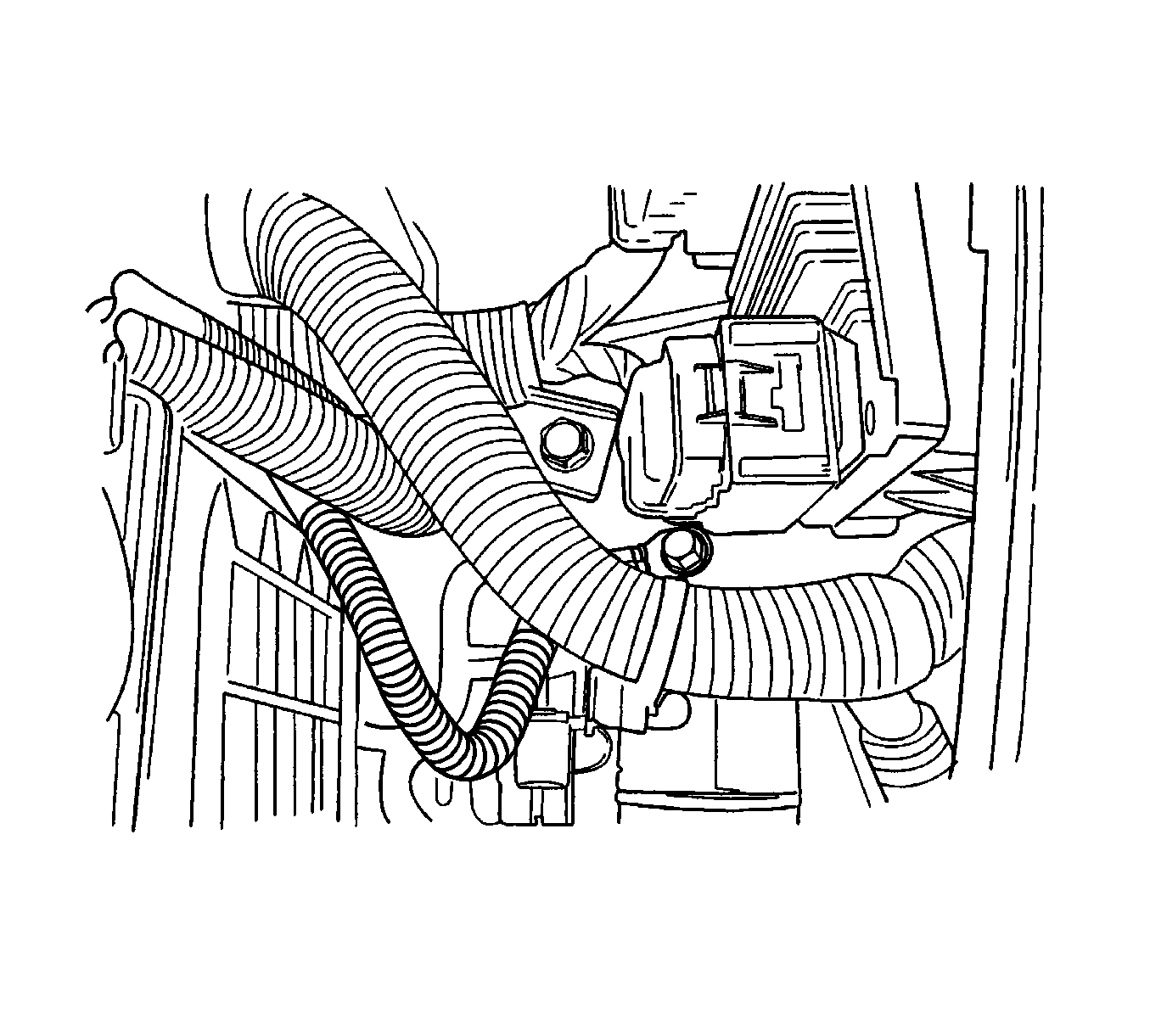
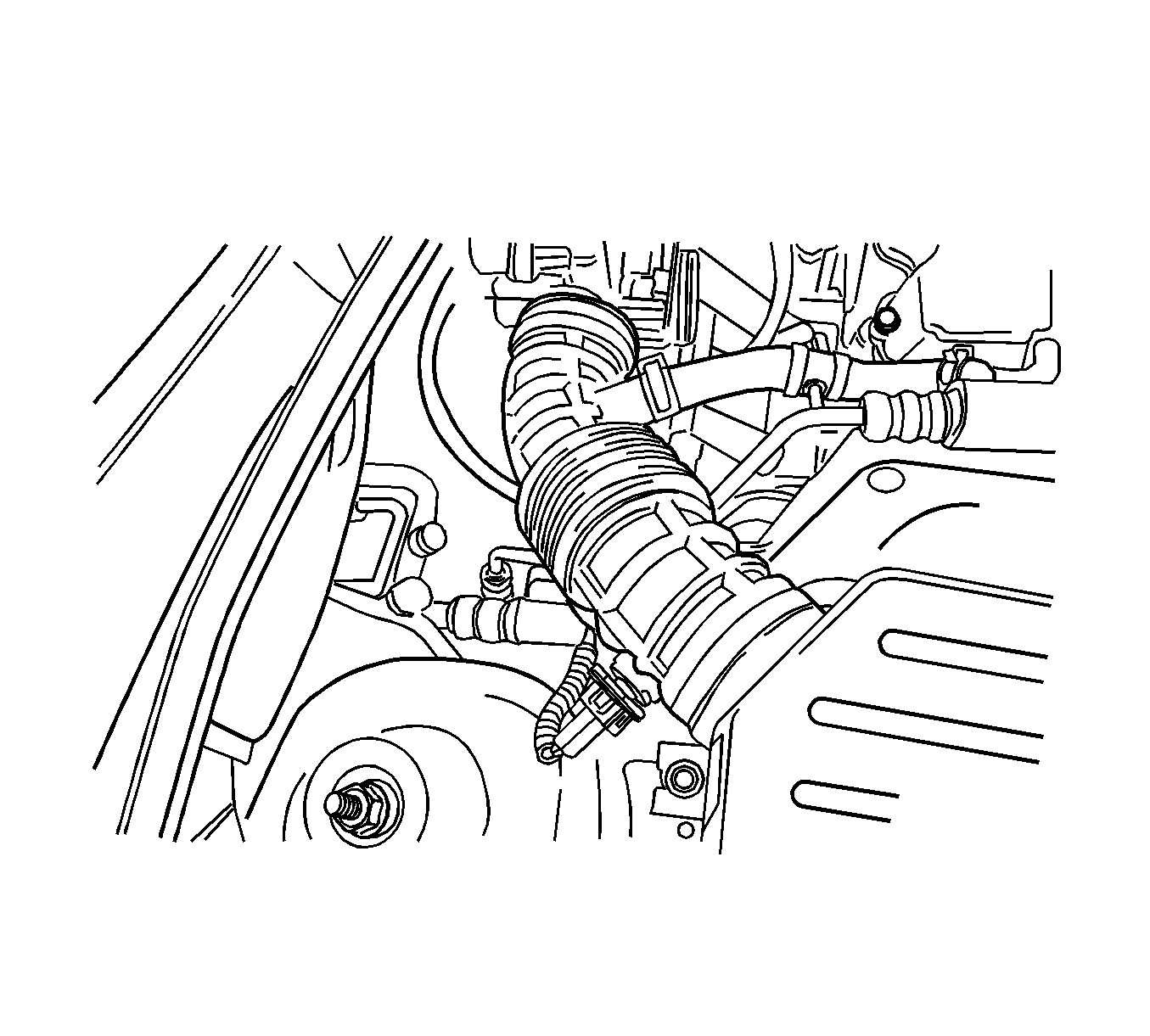
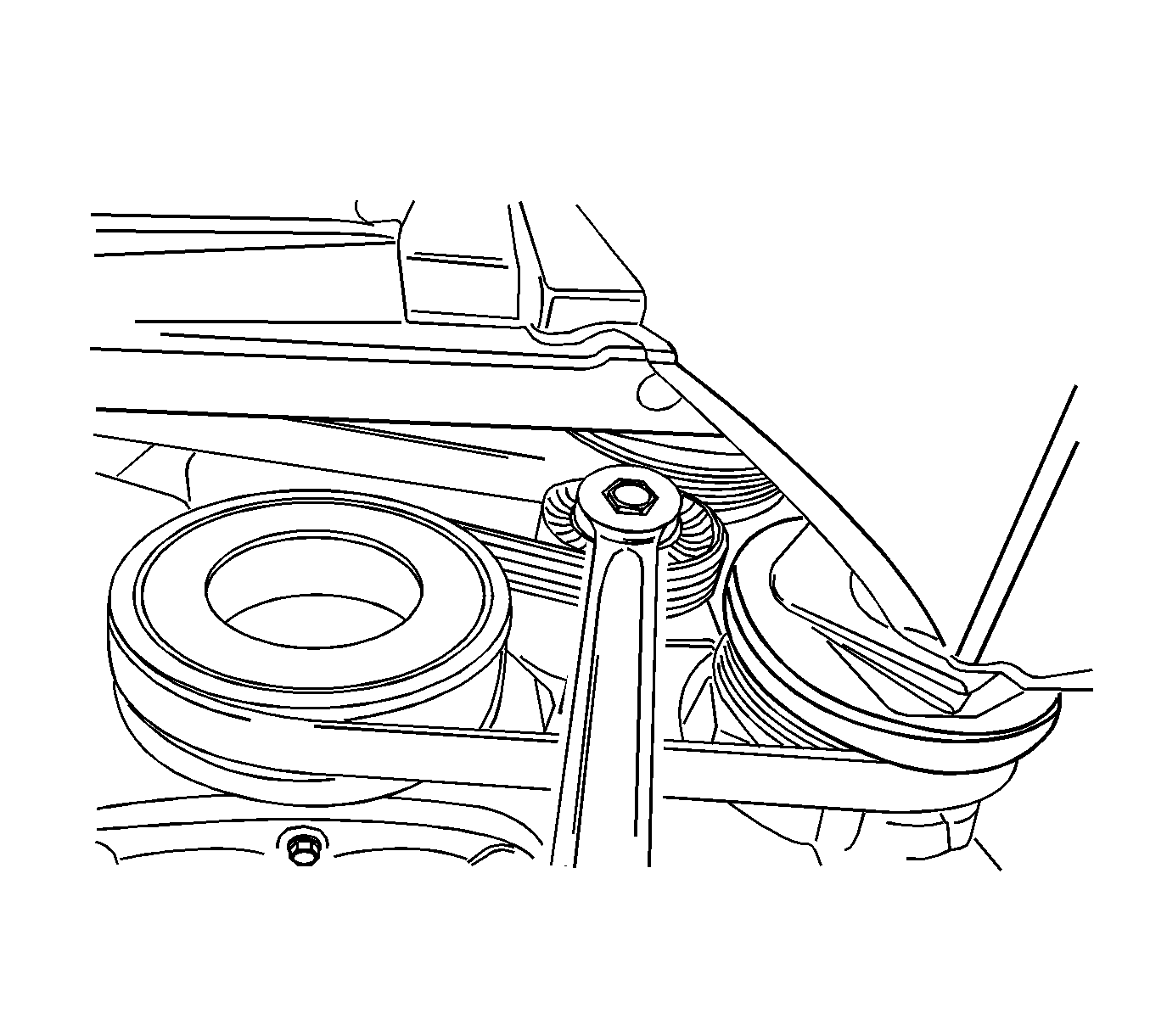
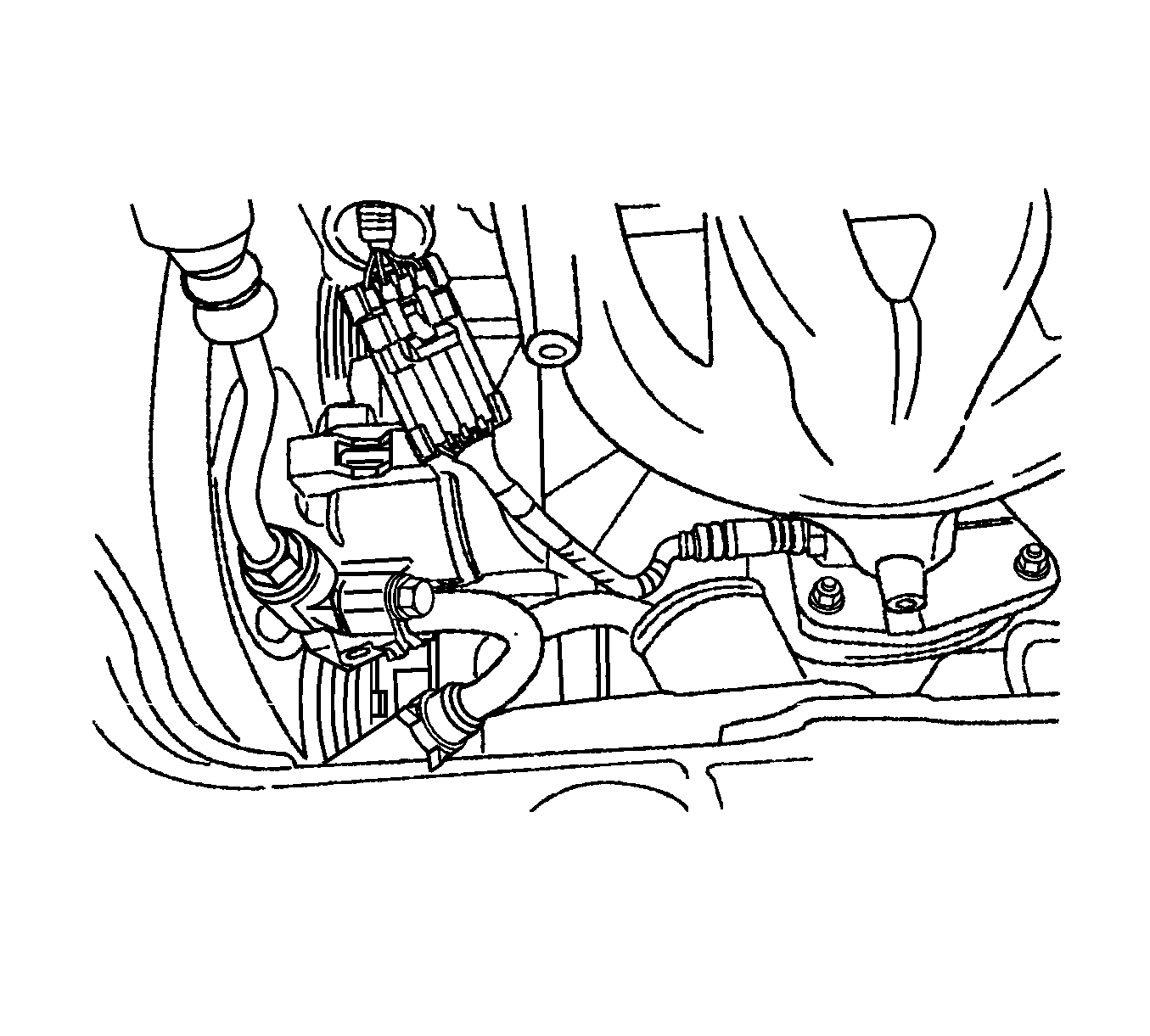
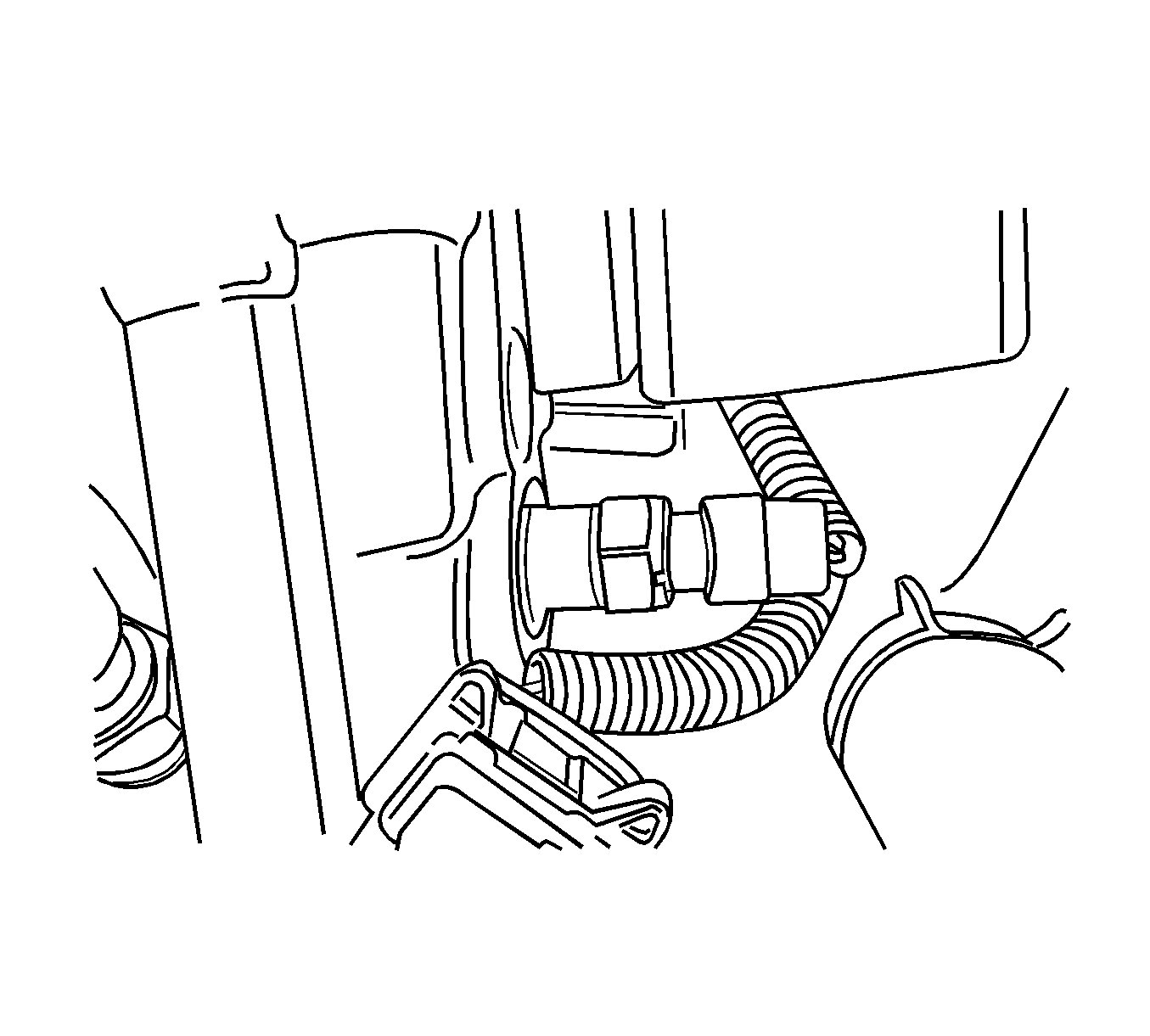

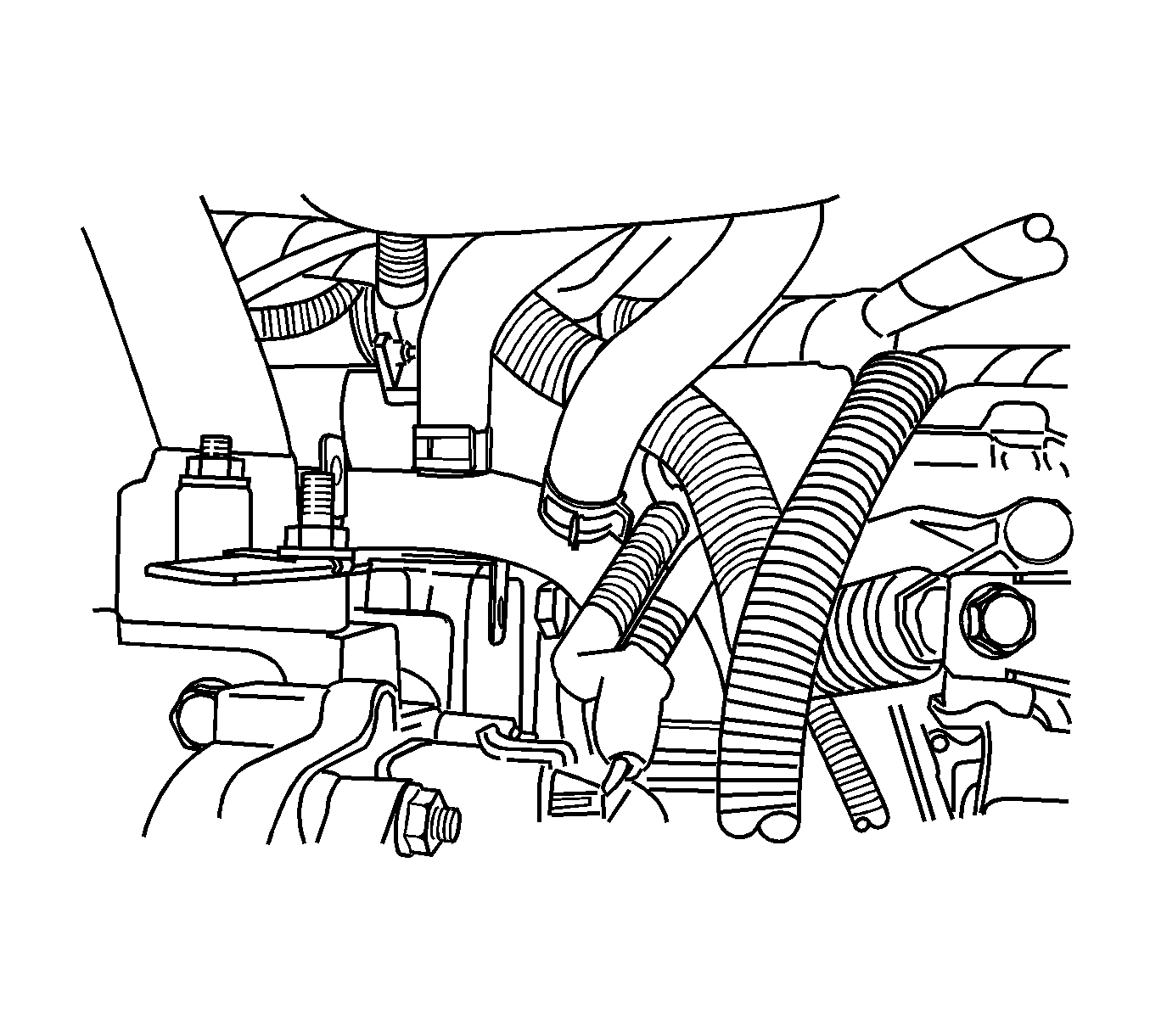
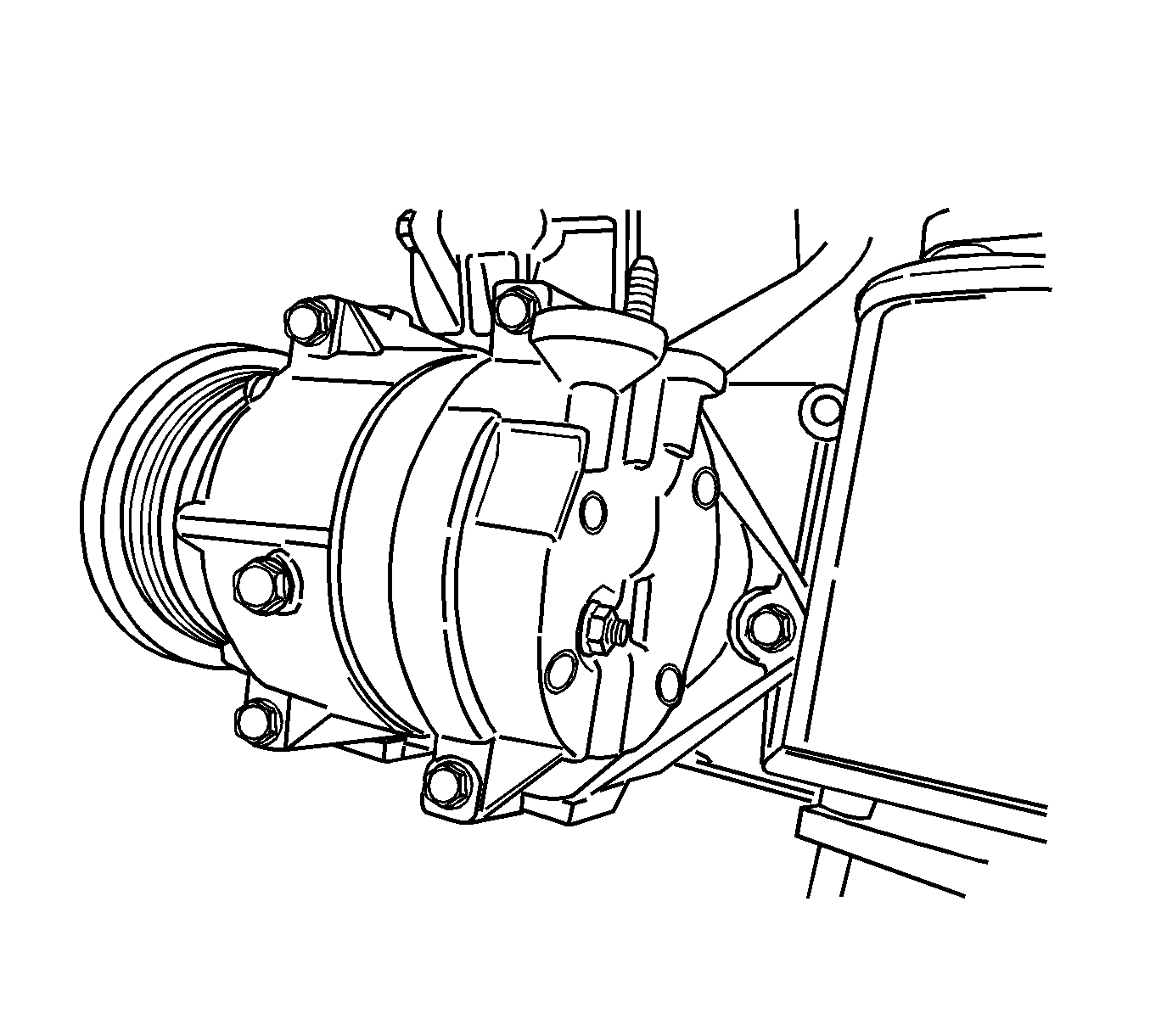
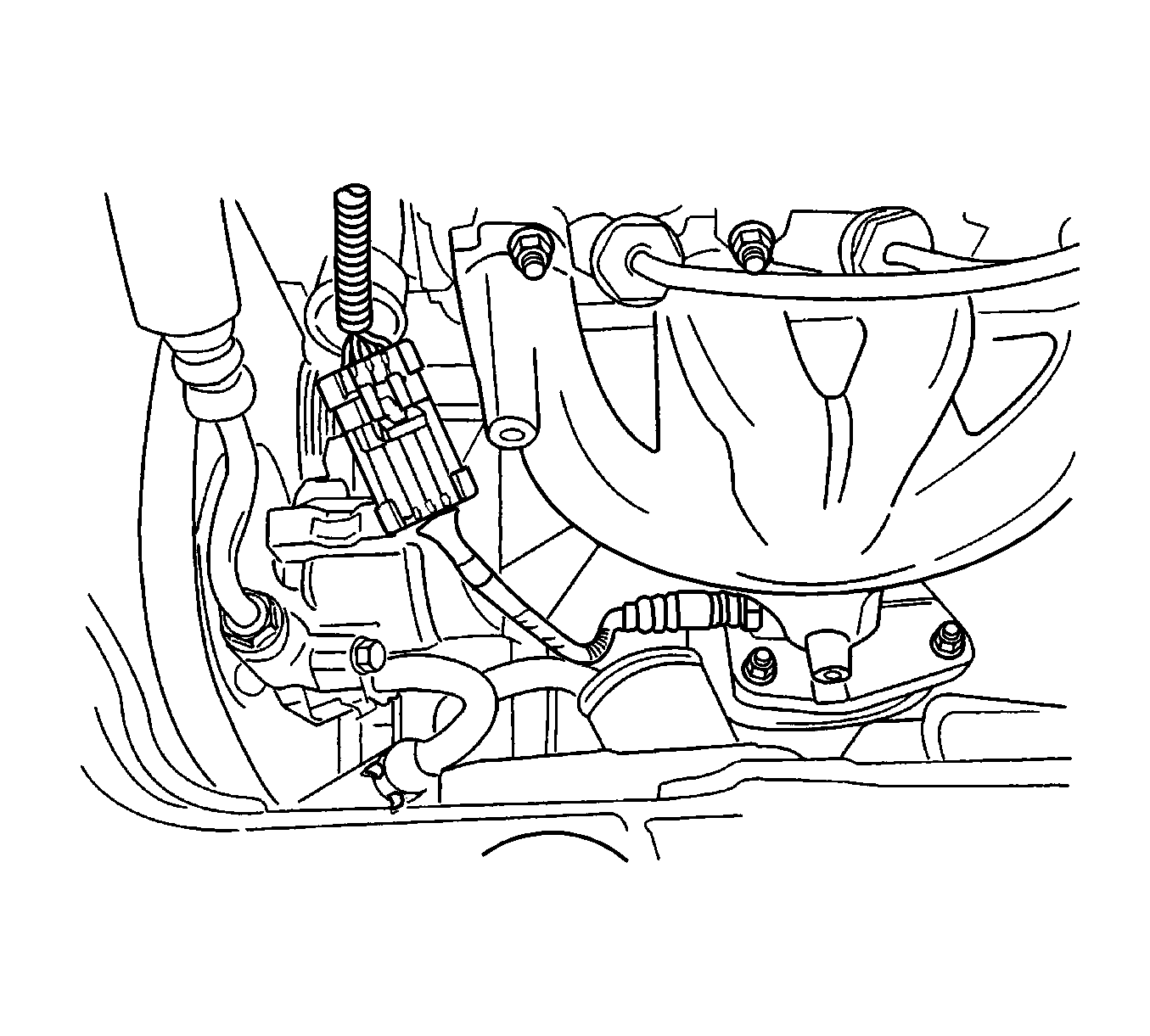
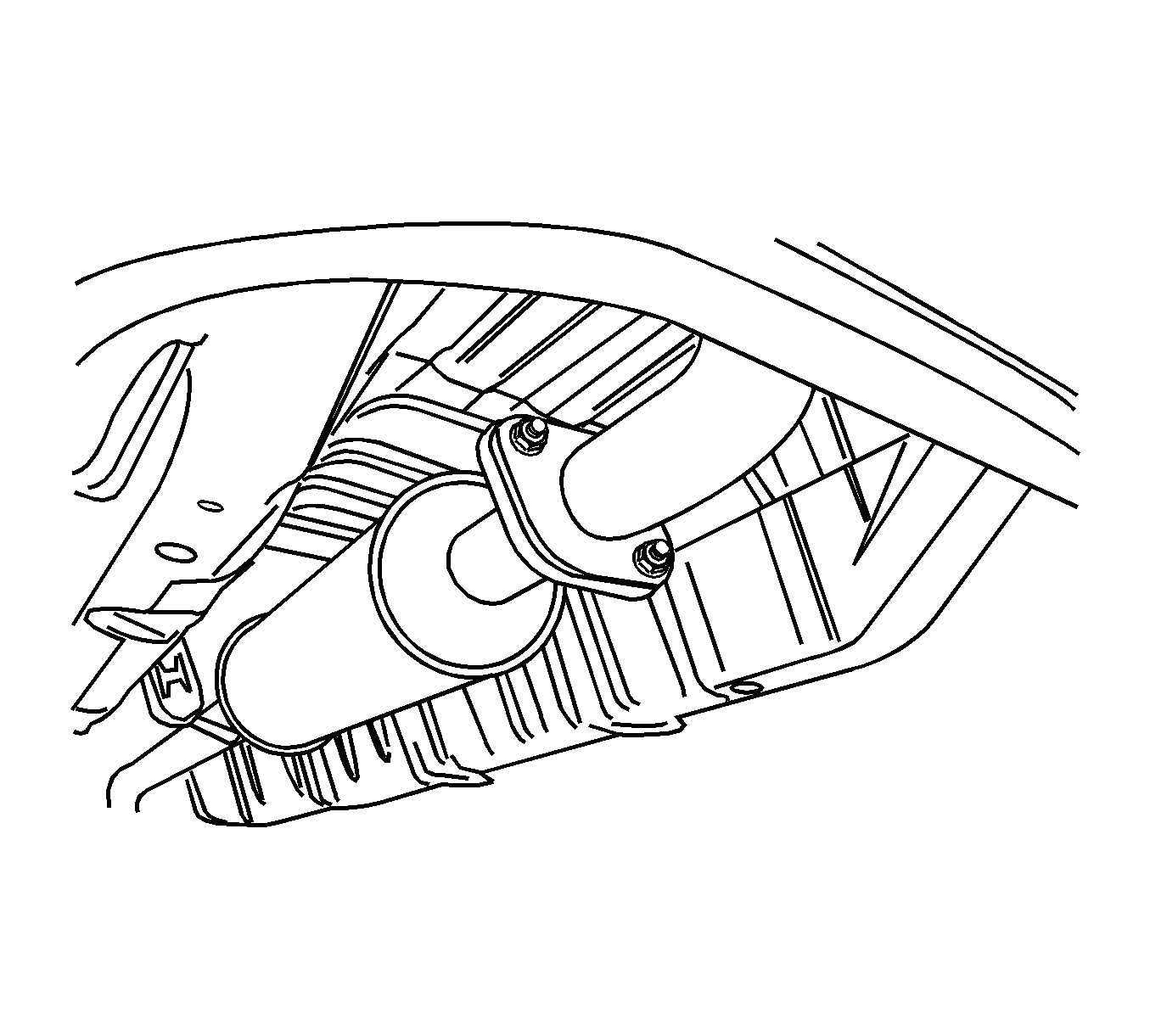
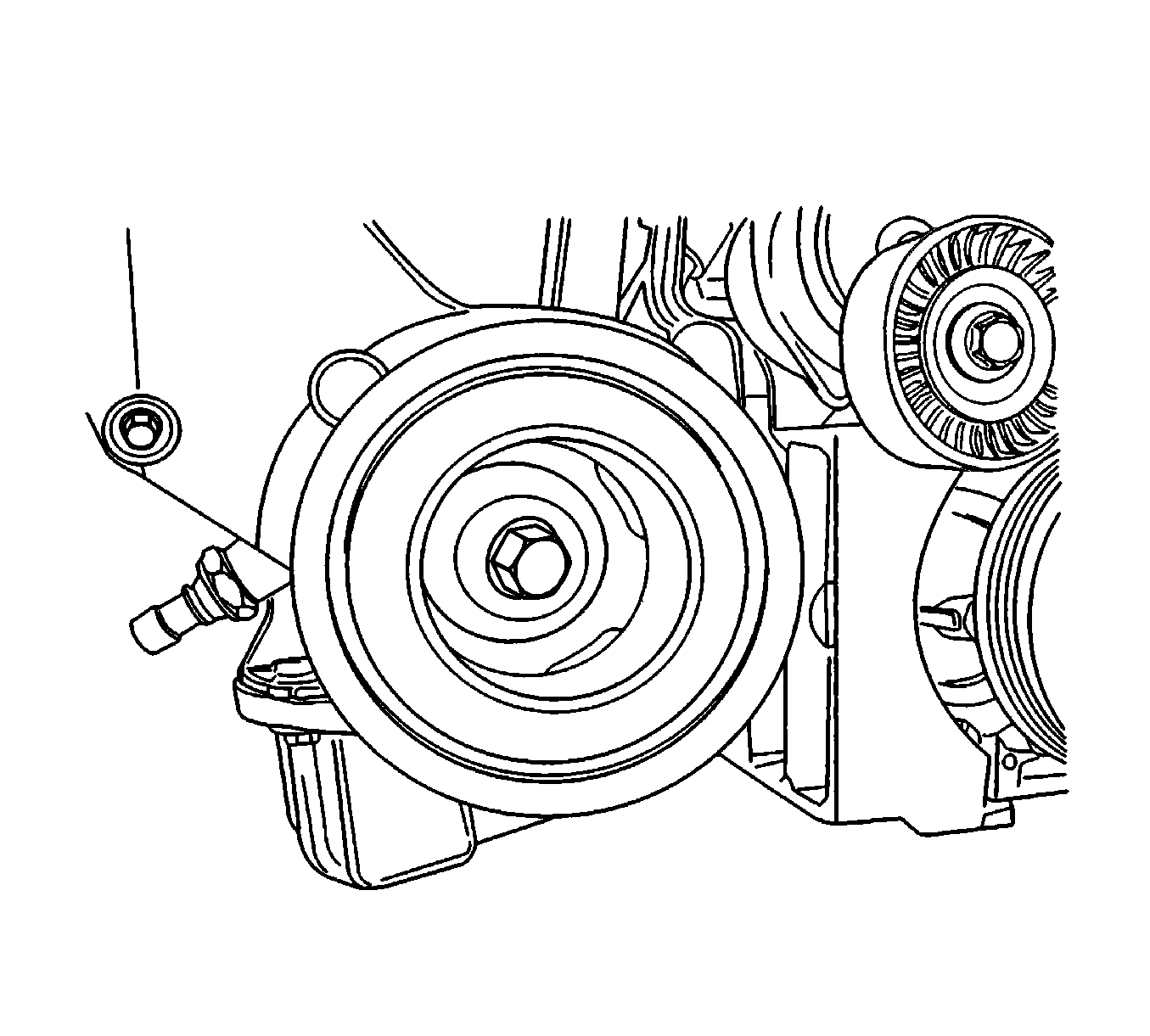
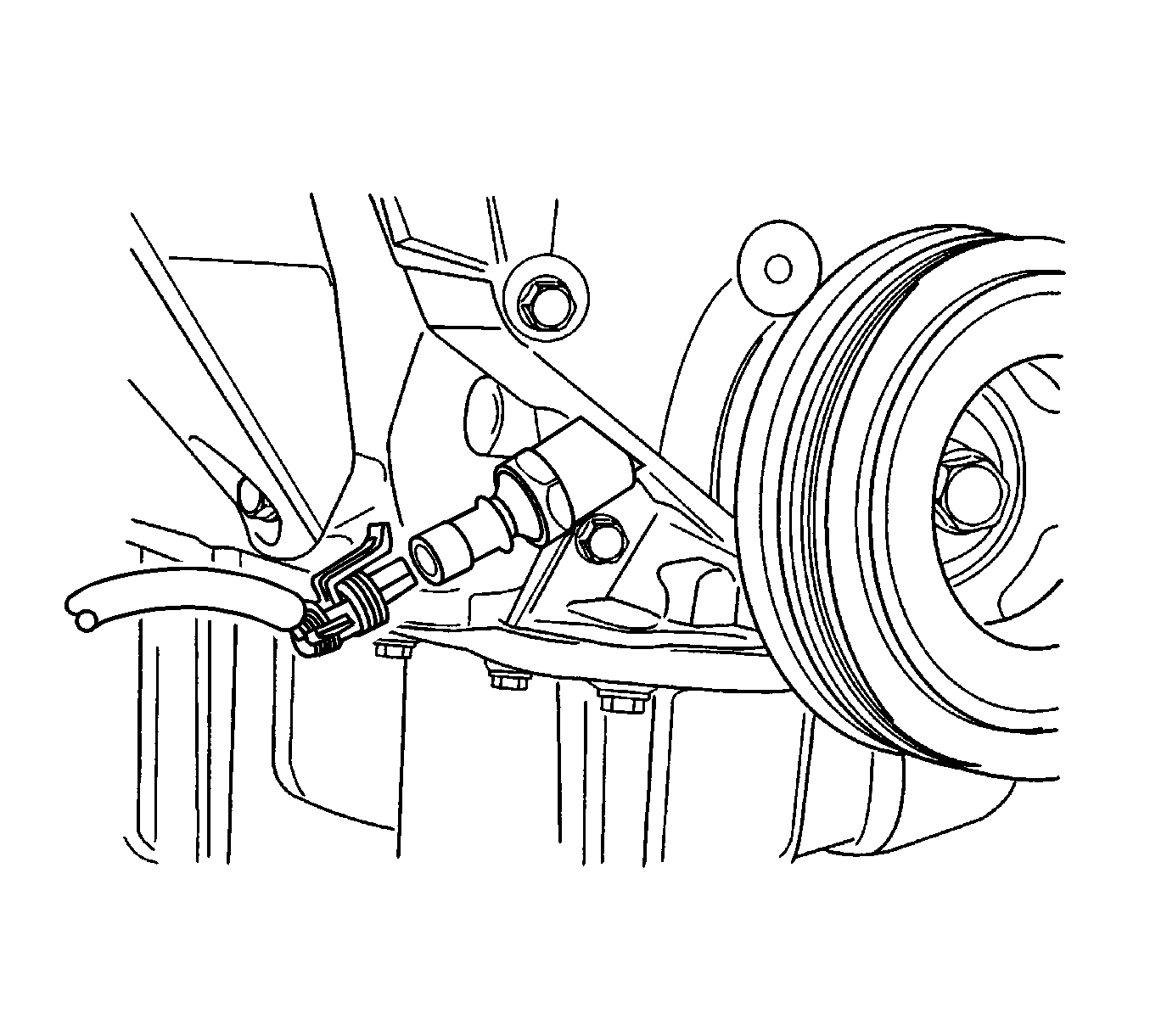
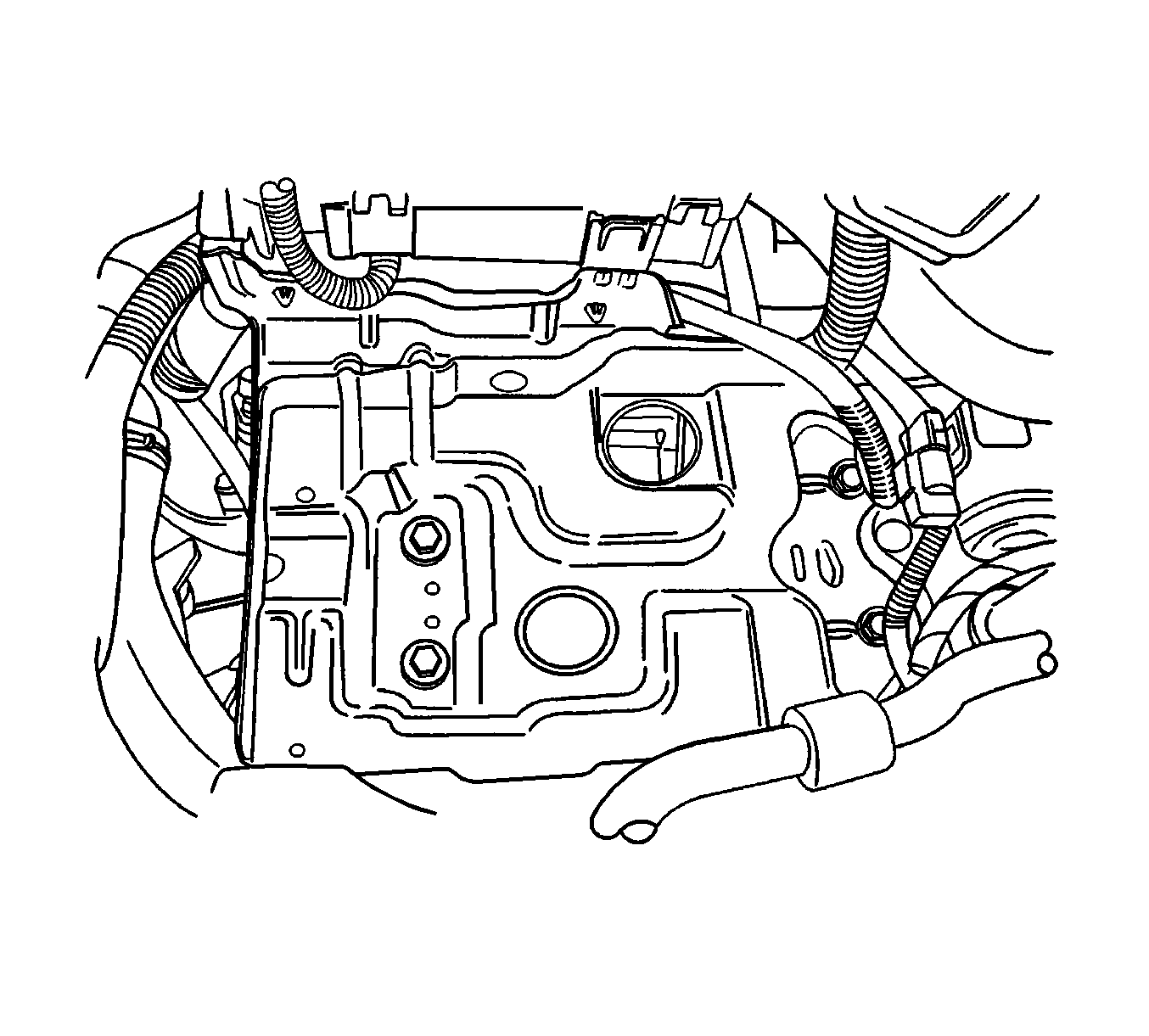
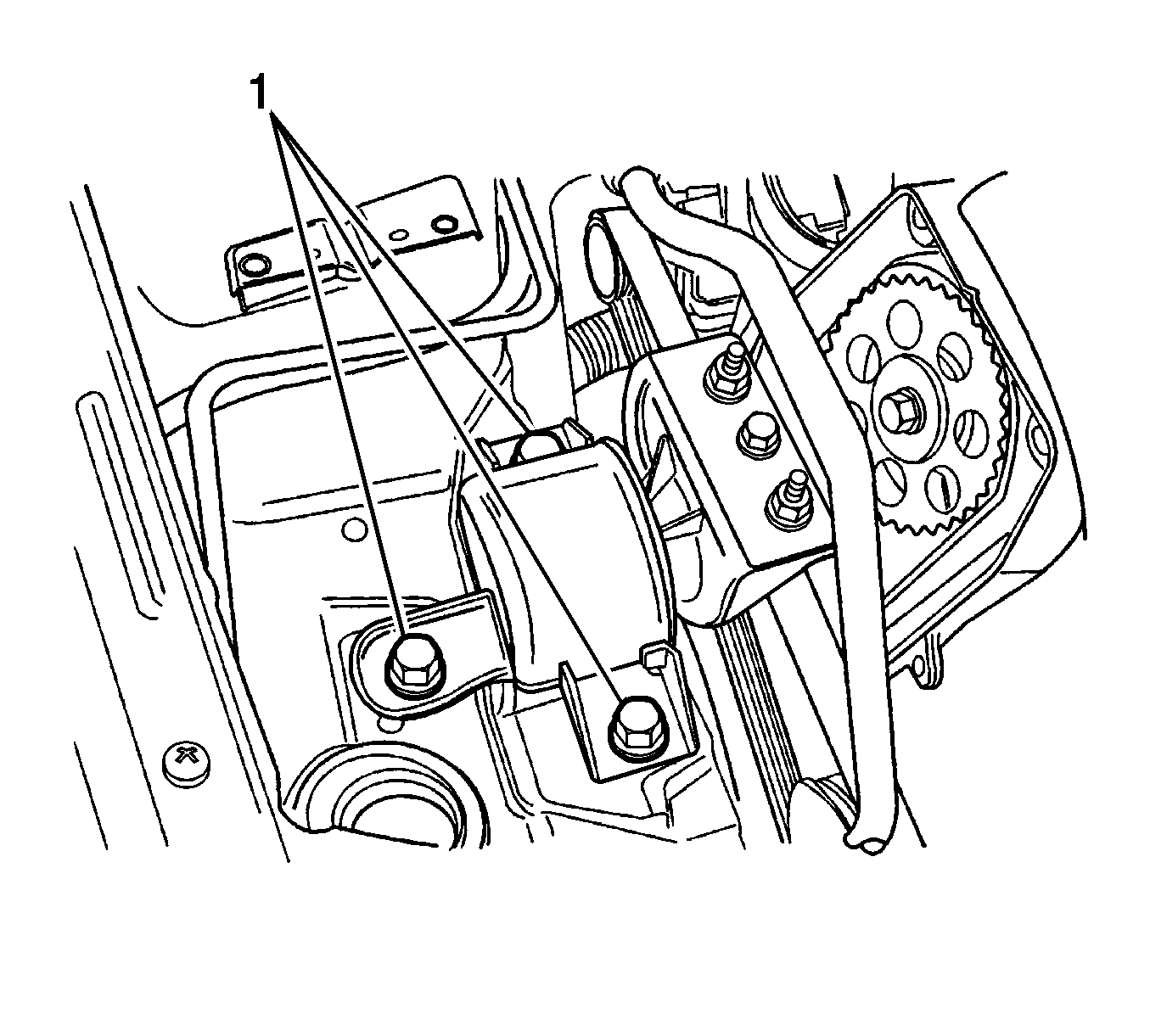
Notice: Refer to Engine Lifting Notice in the Preface section.
Installation Procedure
- Install the engine into the engine compartment.
- Align the transaxle alignment pins (1) to the transaxle.
- Install the transaxle bell housing bolts.
- Install the right engine mount bracket to the engine block.
- Install the right engine mount bracket retaining bolts (1) to the engine block.
- Install the engine mount-to-bracket retaining bolts.
- Remove the floor jack used for support of the transaxle.
- Remove the engine lifting device.
- Install the right transaxle brace bolts to the transaxle.
- Connect the backup switch electrical connector.
- Install the hydraulic clutch pipe.
- Install the battery tray.
- Install the battery.
- Connect the vacuum lines at the EVAP canister purge solenoid.
- Connect the electrical connectors at the EVAP canister purge solenoid.
- Connect the oil pressure switch connector.
- Install the crankshaft pulley.
- Install the crankshaft pulley bolt.
- Tighten the crankshaft pulley bolt to 95 N·m (70 lb ft) using a torque wrench.
- Using the J 45059 or the KM-470-B , tighten the crankshaft pulley bolt another 30 degrees plus 15 degrees.
- Install the CKP sensor and the CKP sensor retaining bolt.
- Connect the CKP sensor connector.
- Install the nuts from the front muffler pipe to the connecting pipe and catalytic converter.
- Install the catalytic converter-to-exhaust manifold nuts.
- Connect the power steering pressure hose from the power steering pump.
- Install the A/C compressor mounting bracket, if equipped.
- Install the A/C compressor mounting bracket bolts, if equipped.
- Install the A/C compressor, if equipped.
- Install the A/C compressor mounting bolts, if equipped.
- Connect the A/C compressor coil connector.
- Install the serpentine accessory drive belt.
- Connect the A/C compressor hose assembly and the A/C compressor hose assembly retaining bolt, if equipped.
- Install the right front wheel well splash shield.
- Install the right front wheel. Refer to Tire and Wheel Removal and Installation .
- Connect the fuel feed line to the fuel rail.
- Connect all of the necessary vacuum lines, including the brake booster vacuum hose.
- Connect the pre-converter O2 sensor connector.
- Connect the starter solenoid S terminal wire.
- Connect the alternator voltage regulator connector.
- Connect the ECT sensor connector.
- Connect the TP sensor connector.
- Connect the IAC valve connector.
- Connect the CMP sensor connector.
- Connect the electrical connectors at the fuel injectors.
- Connect the electrical connector at the EI system ignition coil and the powertrain control module (PCM)/ECM ground terminal at the intake manifold.
- Install the air intake tube between the throttle body and the air filter housing.
- Connect the breather tube to the valve cover.
- Connect the IAT sensor connector.
- Install the cooling system radiator and the engine cooling fans. Refer to Radiator Replacement .
- Connect the lower radiator hose to the coolant pipe.
- Connect the upper radiator hose to the thermostat housing.
- Connect the coolant surge tank hose to the radiator.
- Connect the heater outlet hose to the coolant pipe.
- Connect the heater inlet hose to the coolant distributor.
- Connect the coolant surge tank hose to the coolant pipe.
- Connect the surge tank coolant hose to the throttle body.
- Connect the throttle cable to the throttle body and the intake manifold bracket. Install the fuel pump fuse.
- Connect the negative battery cable to the vehicle frame.
- Connect the negative battery cable to the battery.
- Connect and assemble the battery positive cable.
- Refill the engine crankcase with engine oil.
- Refill the engine coolant system. Refer to Cooling System Draining and Filling .
- Refill the power steering system. Refer to Checking and Adding Power Steering Fluid .
- Bleed the power steering system as necessary. Refer to Power Steering System Bleeding .
- Refill the A/C refrigerant system as necessary. Refer to Refrigerant Recovery and Recharging .
- Install the hood. Refer to Hood Replacement .
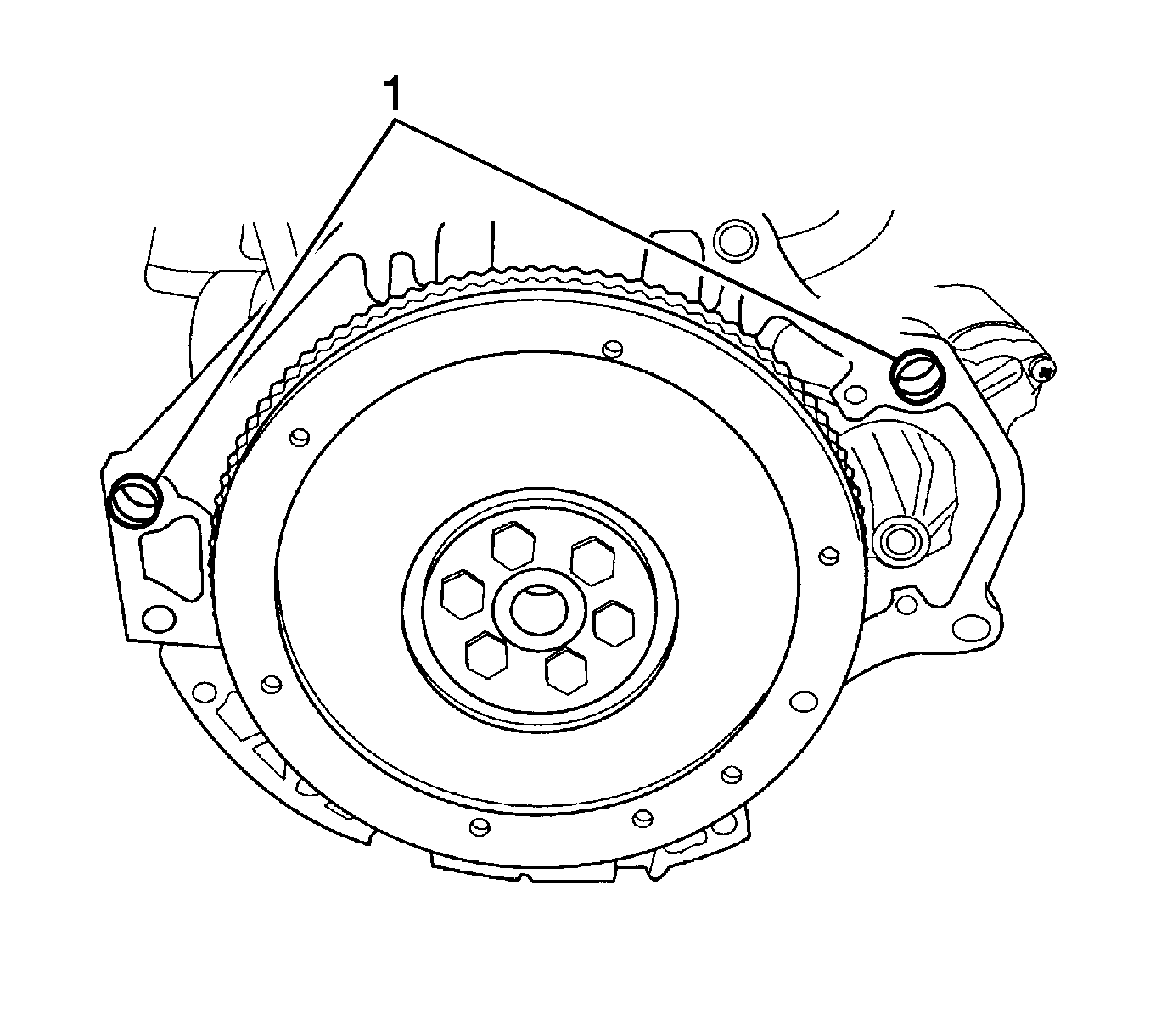
Notice: Refer to Fastener Notice in the Preface section.
Tighten
Tighten the transaxle bell housing bolts to 75 N·m (55 lb ft).

Tighten
Tighten the engine mount bracket retaining bolts to 60 N·m (44 lb ft).
Tighten
Tighten the engine mount bracket-to-engine mount retaining bolts to 60 N·m (44 lb ft).

Tighten
Tighten the right transaxle brace bolts to 60 N·m (44 lb ft).

Tighten

Tighten
Tighten the crankshaft position sensor retaining bolt to 10 N·m (89 lb in).
Tighten
Tighten the front muffler-to-main catalytic converter nuts to 30 N·m (22 lb ft).

Tighten
Tighten the catalytic converter-to-exhaust manifold nuts to 40 N·m (30 lb ft).


Tighten
Tighten the A/C compressor mounting bracket bolts to 50 N·m (37 lb ft).
Tighten
Tighten the A/C compressor mounting bolts to 27 N·m (20 lb ft).
Tighten
Tighten the A/C compressor hose assembly retaining bolt to 33 N·m (24 lb ft).
